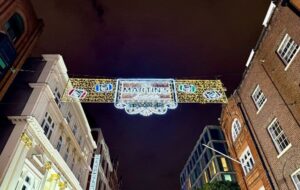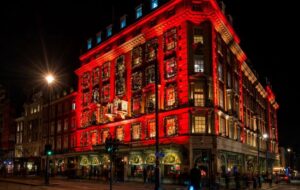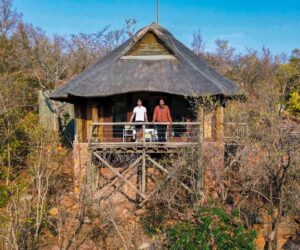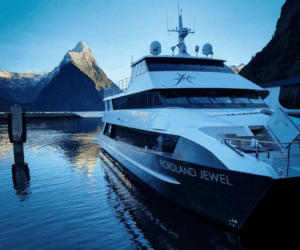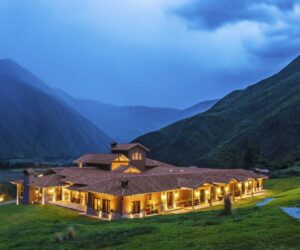The Caribbean is home to rich history and stunning landmarks that tell stories of ancient civilizations, colonial rule, and independence. From forts to Mayan ruins, these destinations combine breathtaking views with cultural significance. Here’s a quick overview of the top 10 historical sites you shouldn’t miss:
- Nelson’s Dockyard, Antigua: A Georgian-era dockyard still in use, offering museums, restored buildings, and sailing events.
- Brimstone Hill Fortress, St. Kitts: A volcanic hilltop fortress showcasing British military engineering.
- La Citadelle Laferrière, Haiti: The largest fortress in the Americas, built to defend Haiti’s independence.
- Pigeon Island National Landmark, St. Lucia: Colonial ruins and Fort Rodney with trails and beaches.
- Tulum Ruins, Mexico: A coastal Maya site perched on cliffs with temples and stunning sea views.
- Castillo San Felipe del Morro, Puerto Rico: A Spanish-built fortress that defended San Juan for centuries.
- Bridgetown and its Garrison, Barbados: A UNESCO-listed area blending colonial architecture and military history.
- Curaçao Maritime Museum, Curaçao: A museum exploring 500 years of maritime history and trade.
- Betty’s Hope, Antigua: Antigua’s first sugar plantation, now an open-air museum.
- Rose Hall Great House, Jamaica: A Georgian mansion steeped in plantation-era history and eerie legends.
These sites offer a glimpse into the Caribbean’s layered past, blending history, architecture, and scenic beauty.
Quick Tip: Most sites are open daily, with admission fees ranging from $2 to $25. Wear comfortable shoes, carry water, and plan visits during the dry season (December to April) for the best experience.
Well-Preserved Colonial Architecture and Historical Sites in the Caribbean
1. Nelson’s Dockyard, Antigua
Nestled in English Harbour, Nelson’s Dockyard is the only Georgian-era dockyard in the world that’s still in use today. Recognized as a UNESCO World Heritage Site, it stands as a tribute to British naval history and craftsmanship.
Named after Admiral Horatio Nelson, this dockyard played a key role in safeguarding British interests during the 18th and 19th centuries. Its naturally deep and narrow bays provided a safe haven for ships during hurricane seasons. Today, it blends historical charm with modern-day attractions.
The dockyard’s history is deeply entwined with the labor of enslaved Africans. Their contributions are honored through initiatives like the 8th of March Project. UNESCO highlights its importance:
"The Antigua Naval Dockyard and its Related Archaeological Sites exhibit an important exchange of human values over a span of time within the Caribbean and between this region and the rest of the Commonwealth, on developments in architecture, technology and exploitation of natural topographical features for strategic military purposes."
What to See and Do
- Dockyard Museum: Features artifacts like Nelson’s telescope and tea caddy.
- Dow’s Hill Interpretation Centre: Offers a 15-minute presentation on Antigua’s history.
- Working Marina: Hosts vibrant sailing events.
- Georgian-Style Buildings: Restored structures now house restaurants, shops, and cafes.
Visitor Details
- Admission: $15 (includes access to Shirley Heights and Dow’s Hill).
- Hours: Open daily.
- Key Attractions: Historic architecture, marina views, and an engaging museum experience.
Thanks to restoration efforts supported by the EU, Nelson’s Dockyard has become a celebrated heritage site. Don’t miss Fort Berkeley, built in 1704, which is the earliest defensive structure in English Harbour.
2. Brimstone Hill Fortress, St. Kitts
Sitting atop an 800-foot volcanic hill, Brimstone Hill Fortress is a standout example of British military engineering from the 17th and 18th centuries. Built by enslaved African laborers, this UNESCO World Heritage Site – often called "The Gibraltar of the West Indies" – is one of the Caribbean’s best-preserved colonial military complexes.
Construction began in 1690 when the British installed cannons to defend against French attacks. Over the next century, the fortress expanded, with its walls made from volcanic rock and limestone mortar, both sourced and crafted on-site.
Military History and Importance
By 1736, the fortress was equipped with 49 guns and considered nearly impenetrable. However, in January 1782, French forces captured it after a month-long siege. The Treaty of Paris returned the fortress to British control in 1783. Its strategic value stemmed from St. Kitts’ role as the first Caribbean island permanently settled by both the English and French.
Architectural Highlights
The fortress features several key areas, including the Fort George Citadel, now home to a museum, as well as the Western and Eastern Places of Arms, the Magazine Bastion, and the remains of military quarters. These structures reflect a blend of practical design and historical intrigue, offering visitors a vivid glimpse into the past.
Visitor Information
| Detail | Information |
|---|---|
| Hours | 9:30 AM – 5:30 PM daily |
| Admission | $15.00 (adults), $7.50 (children) |
| Site Area | 40 acres with a 1-mile buffer zone |
What to See and Do
The fortress provides breathtaking views of the coastline, Sandy Point, and nearby islands. Visitors can tour the Fort George Museum, which showcases military artifacts and historical displays.
"Brimstone Hill Fortress National Park is a UNESCO World Heritage Site of historical, cultural and architectural significance: a monument to the ingenuity of the British military engineers who designed it and to the skill, strength and endurance of the African slaves who built and maintained it."
Tips for Visitors:
- Wear sturdy shoes for navigating steep paths.
- Keep an eye out for vervet monkeys along the trails.
- Visit early in the day for the clearest views.
- Set aside 2–3 hours to fully explore the site.
3. La Citadelle Laferrière, Haiti
Sitting atop Bonnet à l’Eveque at an elevation of 3,000 feet, La Citadelle Laferrière is the largest fortress in the Americas. It stands as a powerful reminder of Haiti’s fight for independence. Built between 1805 and 1820 under the leadership of Henri Christophe, a key figure in the Haitian slave revolution, this massive structure showcases advanced military engineering and design. Its strategic and bold construction reflects its historic role in defense.
Construction and Architecture
Constructed by 20,000 workers, the fortress features walls that soar 130 feet high and are 10 feet thick. Its foundation stones were bonded with an unusual mixture of quicklime, molasses, animal blood, and cow hooves.
Military Features
La Citadelle was built to guard against a potential French invasion after Haiti gained independence. Its location on a mountaintop provides sweeping views of northern Haiti’s coastline. Key defensive elements include:
| Defense Feature | Purpose |
|---|---|
| Curved Walls | Deflect incoming attacks |
| Triangular Front Wall | Minimize exposure to enemy fire |
| 365 Cannons | Ensure full artillery coverage |
| 10,000 m² Complex | Accommodate troops and supplies |
Its design, like other Caribbean strongholds, reflects the region’s resourcefulness and determination. Visitors today can explore its historic corridors and imagine its past.
Visitor Experience
Now a UNESCO World Heritage Site, La Citadelle invites visitors to explore its network of ramparts, drawbridges, and hidden passages. The fortress also houses a museum, gallery, and gift shop in its courtyard, offering a deeper dive into its history.
Practical Information:
| Detail | Information |
|---|---|
| Distance from Cap-Haïtien | 1 hour |
| Hiking Distance | 4 miles |
| Elevation Gain | 2,000 ft |
| Horse Ride Cost | $15.00 |
Tips for Visitors:
- Start early to avoid the midday heat.
- Bring plenty of water and snacks.
- Use a 4×4 vehicle for the final approach.
- Consider staying in Milot or Cap-Haïtien for convenience.
The fortress was designed with self-sufficiency in mind, capable of supporting 5,000 people for a full year using stored supplies.
4. Pigeon Island National Landmark, St. Lucia
Located at the northern tip of St. Lucia, Pigeon Island National Landmark is a 44-acre islet connected to the mainland in 1972. It features preserved colonial ruins and fortifications that tell a story of the island’s past.
Military History
Fort Rodney, established by Admiral George Rodney in 1778, served as a key observation point to track French naval activity from nearby Martinique. Originally, the fort was equipped with:
| Artillery | Quantity |
|---|---|
| Four 24-pounder cannons | – |
| Mortars | 2 |
By the mid-19th century, Fort Rodney’s military role had ended. In 1979, the site became a national park, and in 1992, it was designated as a national landmark.
What to See and Do
Today, Pigeon Island offers a mix of history and relaxation, making it a must-visit for both explorers and leisure seekers. The Saint Lucia National Trust describes it as:
"It is a vivid representation of the cultural and historical monuments of international, civil, military and marine cross currents, characteristic of West Indian historical change".
Highlights include:
- Fort Rodney ruins, located 225 feet above sea level
- Two swimming beaches and a paddling area
- Historical military structures
- The Jambe De Bois restaurant, offering local dishes
- An interpretive center and museum
Visitor Details
| Service | Cost |
|---|---|
| Adult Admission (13+) | $10.00 |
| Child Admission (5-12) | $3.00 |
| Guided Tour (1-4 guests) | $20.00 |
| Beach Chair Rental | $3.00 |
| Umbrella Rental | $3.00 |
| History Guidebook | $5.00 |
Operating Hours:
- Open daily: 9:30 AM – 5:00 PM
- Last entry: 4:15 PM
- Closed: December 25th
Tips for Your Visit
The best time to explore Pigeon Island is during the dry season, from December to April. If visiting in mid-May, you can also enjoy the St. Lucia Jazz & Arts Festival, which combines culture and history.
What to Bring:
- Comfortable hiking shoes
- Swimwear
- Water
- Sunscreen
- Cash for rentals and admission
From its days as a pirate hideout to its role as a military outpost, Pigeon Island captures the essence of Caribbean history and culture. It’s a must-see for history buffs and nature lovers alike.
5. Tulum Ruins, Mexico
Sitting atop 39-foot limestone cliffs with stunning views of the Caribbean Sea, the Tulum Ruins are one of the best-preserved coastal Maya sites. Once the main port for the inland city of Coba, Tulum thrived between 1200 and 1521, linking maritime and overland trade routes.
Historical Importance
Tulum played a key role in commerce, trading goods like turquoise, jade, obsidian, textiles, and ceramics. The city was fortified by a massive wall – 26 feet thick and 10 to 16 feet high – on three sides, with the sea acting as a natural barrier. This strategic location is evident in its impressive structures and layout.
Key Highlights
-
El Castillo (The Castle):
Rising 24 feet tall, this is Tulum’s tallest structure and served as a temple. Perched on the cliff edge, it’s one of the site’s most eye-catching features. -
Temple of the Descending God:
This temple, dedicated to the descending god, showcases intricate carvings that reflect Tulum’s religious traditions.
Visitor Information
| Detail | Cost |
|---|---|
| Entrance Fee | $6.00 |
| National Park Bracelet | $4.00 |
| Optional Shuttle Service | $3.00 |
| Professional Camera Pass | $2.50 |
| Guided Tour (Starting Price) | $45.00 |
Hours:
- Open daily: 8:00 AM – 5:00 PM
- Last entry: 4:30 PM
Preservation and Visitor Tips
With over 2,000 visitors arriving daily, Tulum requires ongoing efforts to maintain its condition. Lonely Planet describes it best:
"Tulum is one of the most visited archaeological zones in Mexico and for good reason: it’s sublime."
Helpful Tips for Visitors:
- Arrive early (8:00 AM) or late (after 3:00 PM) to avoid crowds.
- Bring water, sunblock, and sturdy shoes.
- Pack swimwear if you want to enjoy the beach below El Castillo.
Although Tulum was inhabited for about 70 years after the Spanish arrived, it now welcomes over 2.2 million visitors annually. As Mexico’s third most-visited archaeological site, it offers a fascinating look into the Maya civilization’s maritime trade and architectural achievements. Don’t miss the chance to explore this incredible piece of history.
sbb-itb-abd5969
6. Castillo San Felipe del Morro, Puerto Rico
Sitting high on a 140-foot promontory overlooking the Atlantic Ocean, Castillo San Felipe del Morro is one of the Caribbean’s most iconic military structures. Built by the Spanish, construction began in 1539 and spanned over 250 years, finally wrapping up around 1790.
Architectural Highlights
El Morro showcases ingenious military architecture. With six levels facing the Atlantic, the fortress features walls that are 18 to 25 feet thick, designed to withstand attacks. Its design reflects a mix of Italian Renaissance, Baroque, and French Enlightenment influences. A standout feature is its tri-cistern system, capable of storing 216,000 gallons of water, which kept the fort operational during long sieges.
A History of Defense
El Morro’s location made it a critical part of San Juan’s defense, successfully withstanding numerous assaults:
| Year | Attack | Outcome |
|---|---|---|
| 1595 | Sir Francis Drake’s invasion | Defended successfully |
| 1598 | Earl of Cumberland’s siege | Brief British control; later abandoned |
| 1625 | Dutch assault | Repelled |
| 1797 | British invasion | Spanish forces prevailed |
| 1898 | Spanish–American War | Bombarded by the U.S. Navy |
What to Expect When Visiting
El Morro isn’t just about its walls and cannons – it’s a gateway to Puerto Rico’s rich history. Each year, around two million people visit this site. From the fortress, you’ll enjoy breathtaking views of the Atlantic Ocean, Old San Juan, Santa María Magdalena de Pazzis Cemetery, La Perla, and the nearby El Cañuelo fort. In 1983, UNESCO declared it a World Heritage Site, recognizing its historical and architectural value.
"They represent a fine display of European military architecture adapted to harbor sites on the American continent."
Tips for Your Visit
- Admission: $10.00 for adults; free for children under 15.
- Hours: Open daily.
- Best Time to Visit: Early morning.
- What to Bring: Sturdy shoes, sunscreen, and water.
- Pro Tips: Arrive early to avoid crowds and the midday heat. Guided tours are available for those who want a deeper dive into its history.
El Morro is a striking blend of history, architecture, and panoramic views, offering a glimpse into the Caribbean’s storied past.
7. Bridgetown and its Garrison, Barbados
Declared a UNESCO World Heritage Site in 2011, Historic Bridgetown and its Garrison covers 187 hectares (about 460 acres) of colonial architecture and military landmarks in the Caribbean. This site combines historical design with military significance, offering a glimpse into Bridgetown’s past.
Architectural Highlights
Bridgetown’s layout breaks away from the standard Spanish and Dutch grid patterns. Instead, its winding streets create a distinctive urban design. The area boasts over 115 landmark buildings, with the Barbados Parliament Buildings standing out as the centerpiece. These neo-Gothic structures, built in the early 1870s after a destructive fire in 1860, are located in what became known as the New Burnt District.
Military Importance
During the 18th and 19th centuries, the Garrison served as the largest British military complex in the colonies. The 30-acre Garrison Savannah parade ground is surrounded by notable structures, including St. Ann’s Fort, the Main Guard House, the Garrison Clock Tower, and historic barracks.
| Military Structure | Historical Role |
|---|---|
| St. Ann’s Fort | First British navy and army base in the Caribbean |
| Main Guard House | Served as a key security checkpoint |
| Garrison Clock Tower | Acted as the central timekeeper for military operations |
| Military Barracks | Provided housing for British troops |
While its military role is evident, the site also offers a window into the broader cultural history of the region.
Cultural Importance
"Historic Bridgetown and its Garrison, an outstanding example of British colonial architecture consisting of a well-preserved old town built in the 17th, 18th and 19th centuries, which testifies to the spread of Great Britain’s Atlantic colonial empire." – UNESCO World Heritage Centre
Beyond its architecture, the site was a hub for administration, trans-Atlantic trade, communication, science, culture, and technology during the colonial era.
Visitor Information
The Barbados Museum & Historical Society provides guided tours with options to suit different interests:
| Tour Type | Cost (USD) | Duration |
|---|---|---|
| Garrison Walking Tour | $25 | 2–3 hours |
| Museum & Garrison Combined Tour | $37.50 | 3 hours |
| Museum Only | $15 | 1–2 hours |
Tips for Visitors:
- Book your tour at least 48 hours in advance.
- Start early in the day to avoid the heat.
- Wear comfortable walking shoes.
- Explore the self-guided mobile tour app for added flexibility.
A visit to Bridgetown offers a compact yet immersive dive into Caribbean colonial history, making it a perfect addition to your exploration of the region’s heritage.
8. Curacao Maritime Museum, Curacao
The Curaçao Maritime Museum offers a deep dive into the island’s rich maritime past. Housed in a historic 1729 mansion on the Waaigat inlet, this museum explores 500 years of maritime history. It’s located in Scharloo, Willemstad, a UNESCO World Heritage site, emphasizing Curaçao’s importance in Caribbean trade.
Historical Exhibits
The museum spans three floors, with its main exhibition detailing maritime advancements from the Middle Ages to today. A standout feature is a detailed model of the Curaçao oil refinery created by Mr. Vos. The third floor focuses on the Dutch Navy’s presence in the Caribbean, brought to life through interactive audio-visual displays.
Maritime Trade Legacy
The exhibits shed light on Curaçao’s complex trading history, including its role in the Dutch slave trade between 1670 and 1815. One display highlights the use of cowrie shells as currency during this era:
| Trade Item | Shell Currency Value (1670–1815) |
|---|---|
| Standard Slave Price | 20 pounds of boesjes |
| Premium Slave Price | 40 pounds of boesjes (10,000–20,000 shells) |
Interactive Experiences
Visitors can choose between two engaging tour options. The Museum Admission ticket, priced at US$10.00 for adults, US$7.00 for children aged 6–17, and free for kids under 6, provides access to all exhibits and interactive displays. Alternatively, the Harbor Tour ticket, costing US$20.00 for adults and around US$15.00 for children aged 3–12, includes a guided ferry ride along Saint Anna Bay, showcasing Willemstad’s historic harbor and landmarks.
The museum’s collection includes nautical charts, ship models, and navigation tools, illustrating the evolution of maritime technology. A highlight is the arrival of the first cruise ship from New York in 1901, marking the start of Curaçao’s cruise tourism industry. This journey from early navigation to modern tourism underscores Curaçao’s enduring role in Caribbean trade.
9. Betty’s Hope, Antigua
Betty’s Hope, founded in 1650, holds a significant place in Caribbean history as Antigua’s first large-scale sugar plantation. Owned by the Codrington family from 1674 to 1944, it became a leading estate on the island, pioneering methods for large-scale sugar production.
Historical Significance
The plantation’s journey from growing crops like tobacco, indigo, and ginger to becoming a major sugar producer reflects broader economic changes in the Caribbean. After the English reclaimed the island in 1674, the estate was granted to the Codrington family as a reward for loyalty to the Crown, replacing the previous owners who were deemed disloyal. This shift set the stage for advancements in sugar production that shaped Antigua’s colonial economy.
Sugar Production Operations
Betty’s Hope was known for its efficient wind-powered mills, which supported its large-scale operations:
| Production Metric | Output |
|---|---|
| Land Processed Per Mill | 2 acres |
| Weekly Juice Extraction | 5,500 gallons |
| Weekly Cane Processed | 200 tons |
| Daily Sugar Output | 12 tons |
Historical records show the estate processed sugarcane grown on 2 acres per mill, producing 5,500 gallons of juice weekly. This translated into 200 tons of cane being processed weekly, resulting in a daily output of 12 tons of sugar crystals[61, 62].
Legacy of Slavery
By 1680, 393 enslaved individuals worked on the estate, highlighting the human cost of its operations. As Dr. Georgia Fox poignantly notes:
"Sugar changed the world. Every time you bite into a chocolate bar or add sugar to your tea or coffee, you are taking part in a long history and reaching into the past."
Modern Museum Experience
Today, visitors can explore the remnants of Betty’s Hope and its layered history. Managed by the Museum of Antigua and Barbuda, the site operates as an open-air museum. Key features include restored twin windmills, the Cistern Complex, ruins of the Great House, and remains of the Boiling House and Still House. There’s also a visitor center located in an old cotton storehouse. Entry costs just US$2[61, 62].
Local historian Reg Murphy sheds light on the site’s historical importance:
"This reveals daily routines and untold stories of the over 400 slaves who once labored at Betty’s Hope."
Ongoing archaeological efforts continue to uncover more details about life on the plantation, adding depth to its narrative.
10. Rose Hall Great House, Jamaica
Wrapping up our exploration of Caribbean heritage sites, Rose Hall Great House stands as a powerful reminder of Jamaica’s colonial history. Built in the 1770s, this Georgian mansion spans 6,600 acres and is steeped in stories of Annie Palmer, infamously called the "White Witch of Rose Hall."
Historical Importance
This grand estate showcases the opulence of Jamaica’s plantation era, with features like intricate mahogany floors, silk wallpaper, and European-style furnishings. During its prime, the estate operated as a major sugar plantation, worked by hundreds of enslaved people, producing up to 1,500 hogsheads of sugar each year [65].
Architecture and Restoration
After being abandoned for decades, the mansion was brought back to life in the 1960s by former Miss USA Rosie Mahn and her husband John Rollins. The restoration preserved its defining elements, including:
- A three-story stone structure
- Georgian-style design
- Sweeping coastal views
- Authentic period furnishings
- Lush tropical gardens
What to Expect as a Visitor
Rose Hall offers both daytime tours and evening ghost tours, making it a must-visit for history buffs and thrill-seekers alike. Here’s what you can explore:
| Feature | Details |
|---|---|
| Great House Tour | $25.00 per adult |
| Haunted Night Tour | $35.00 per adult |
| Operating Hours | 9:30 AM – 5:30 PM (Day) |
| Evening Tours | 6:30 PM – 9:30 PM |
The site also includes a museum showcasing plantation-era artifacts, gift shops, and the White Witch Pub & Restaurant [66][67].
The Legend of Annie Palmer
"Every great house has its ghost story, but none quite as compelling as Rose Hall’s tale of Annie Palmer, who allegedly murdered three husbands and countless slave lovers before meeting her own violent end." [68]
Whether you’re drawn to its historical roots or its eerie legends, Rose Hall Great House offers a captivating glimpse into Jamaica’s colonial past.
Planning Your Visit
Make the most of your trip to the Caribbean’s historical sites with some thoughtful preparation.
Best Time to Visit
You can visit any time of the year, but the period from December to April usually offers the best weather, with temperatures between 75°F and 85°F and less humidity. Keep in mind that hurricane season spans June through November, so plan accordingly to avoid potential weather-related issues.
Transportation and Access
There are several ways to explore the Caribbean’s historical landmarks, each with its own advantages:
| Transportation Type | Approximate Cost | Benefits |
|---|---|---|
| Organized Tours | $75–$150 per person | Includes a guide, transportation, and entry fees |
| Private Taxi | $40–$60 per hour | Offers flexibility and personalized site visits |
| Rental Car | $50–$75 per day | Great for independent exploration at your own pace |
Choose the option that best suits your travel style and budget.
Admission and Hours
Most sites are open daily from 9:00 AM to 5:00 PM, with some offering combination tickets to visit multiple locations. Here’s a quick guide to a few popular sites:
| Site | Adult Admission | Operating Hours |
|---|---|---|
| Brimstone Hill Fortress | $15.00 | 9:30 AM – 4:30 PM |
| La Citadelle Laferrière | $7.00 | 8:00 AM – 4:00 PM |
| Castillo San Felipe del Morro | $10.00 | 9:00 AM – 6:00 PM |
Double-check hours and ticket options to make the most of your visit.
Essential Tips
- Book guided tours with certified experts to gain deeper knowledge about the history.
- Verify photography rules before your visit.
- Wear comfortable shoes, as many sites involve steep climbs or uneven paths.
- Stay hydrated – bring water with you.
- Carry a photo ID, as it may be required for entry.
These small steps can make your visit more enjoyable and hassle-free.
Accommodation Planning
If you’re planning to visit multiple islands, consider staying at a central location. Complete Travel offers resorts near historical landmarks, complete with full kitchens, concierge services, and arrangements for local activities. This setup can save you time and add convenience to your trip.
Conservation Support
Your visit plays a role in preserving these historic landmarks. You can further contribute by joining local heritage programs or making a donation to support conservation efforts.


